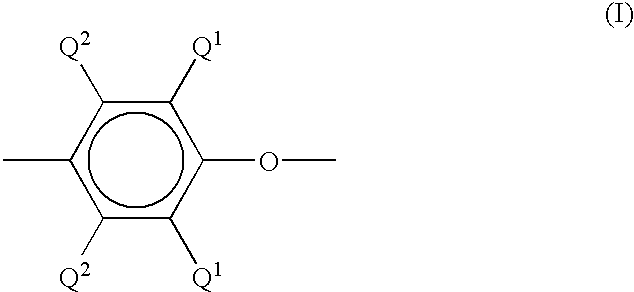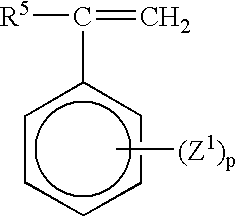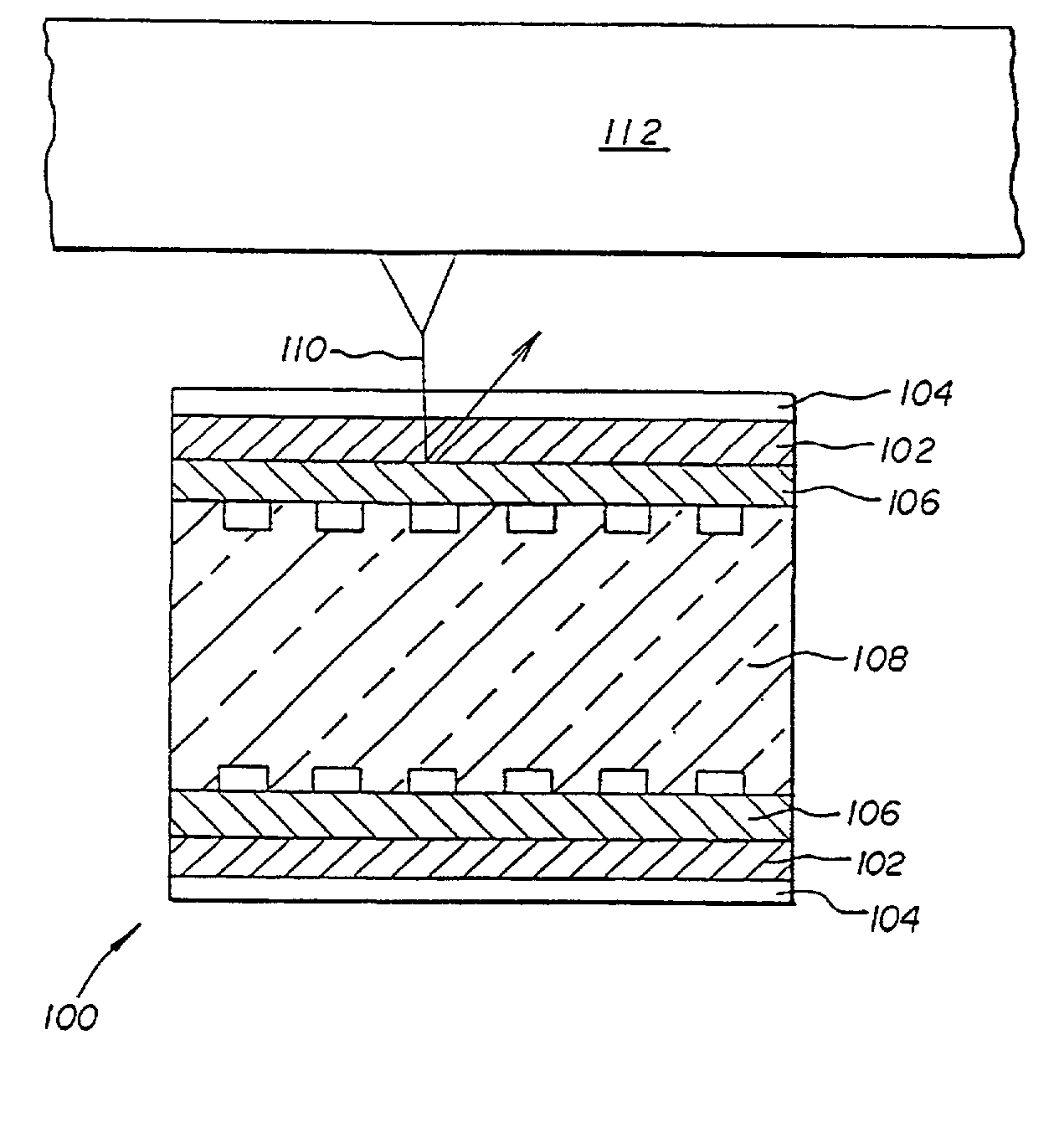Poly(arylene ether) data storage media
a technology of poly(arylene ether) and data storage media, which is applied in the field of poly(arylene ether) data storage media, can solve the problems of difficult pattern creation, pit or groove structure, and inability to store and retrieve data, so as to prevent the sticking of the pae and minimize the effect of decomposition
- Summary
- Abstract
- Description
- Claims
- Application Information
AI Technical Summary
Benefits of technology
Problems solved by technology
Method used
Image
Examples
example 2
[0050] Poly(phenylene ether) / polystyrene
[0051] A blend of 60 wt % 0.33 IV poly(phenylene ether) powder (commercially available from GE Plastics) and 40 wt % polystyrene pellets (Nova PSI 72) was extruded in a 40 mm twin screw extruder to make homogeneous, single phase pellets. The resulting pellets were then injection molded to form an optical disk with a grooved surface, with the groove depth of the mold insert ("stamper") being approximately 50 nm deep and a track pitch of approximately 0.8 .mu.. Tg of the material was about 158.degree. C. This material showed superior replication of the grooved structure compared to the blends containing higher poly(phenylene ether) content. The ductility of the material (as measured by Notched Izod, Dynatup, or other impact-type methods) was superior to that of blends containing higher polystyrene content. The disk exhibits improved flatness, lower density, and lower moisture absorption than a typical optical quality polycarbonate disk as in Com...
example 3
[0052] Poly(phenylene ether) / polystyrene
[0053] A blend of 25 wt % 0.33 IV poly(phenylene ether) powder (commercially available from GE Plastics) and 75 wt % polystyrene pellets (Nova PSI 72) was extruded in a 40 mm twin screw extruder to make homogeneous, single phase pellets. The resulting pellets were then injection molded to form an optical disk. Tg of the material was about 124.degree. C. While the flow and replication of this material were superior to that of the higher poly(phenylene ether) content blends, the ductility and Tg are significantly lower. The disk exhibits improved flatness, lower density, and lower moisture absorption than a typical optical quality polycarbonate disk as in Comparative Example 1.
example 4
[0054] Poly(phenylene ether) / poly(phenylene ether) / polystyrene
[0055] A blend of 50 wt % 0.33 IV poly(phenylene ether) powder (commercially available from GE Plastics), 5 wt % 0.12 IV poly(phenylene ether) powder, and 45 wt % polystyrene pellets (Nova PS172) was extruded in a 40 mm twin screw extruder to make homogeneous, single phase pellets. The resulting pellets were then injection molded to form an optical disk with a grooved surface, with the groove depth of the mold insert ("stamper") being approximately 50 nm deep and a track pitch of approximately 0.8 .mu.. Tg of the material was about 155.degree. C. The material showed superior flow compared to a blend which contains 55 wt % 0.33 IV poly(phenylene ether) without any significant sacrifice in ductility. The disk exhibited improved flatness, lower density, and lower moisture absorption than a typical optical quality polycarbonate disk as in Comparative Example 1.
PUM
| Property | Measurement | Unit |
|---|---|---|
| glass transition temperature | aaaaa | aaaaa |
| thickness | aaaaa | aaaaa |
| thickness | aaaaa | aaaaa |
Abstract
Description
Claims
Application Information
 Login to View More
Login to View More - R&D
- Intellectual Property
- Life Sciences
- Materials
- Tech Scout
- Unparalleled Data Quality
- Higher Quality Content
- 60% Fewer Hallucinations
Browse by: Latest US Patents, China's latest patents, Technical Efficacy Thesaurus, Application Domain, Technology Topic, Popular Technical Reports.
© 2025 PatSnap. All rights reserved.Legal|Privacy policy|Modern Slavery Act Transparency Statement|Sitemap|About US| Contact US: help@patsnap.com



